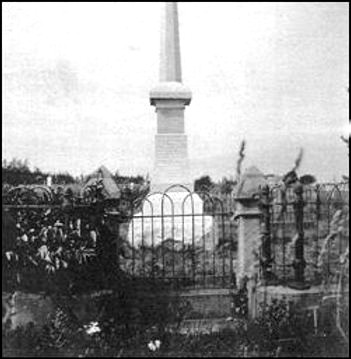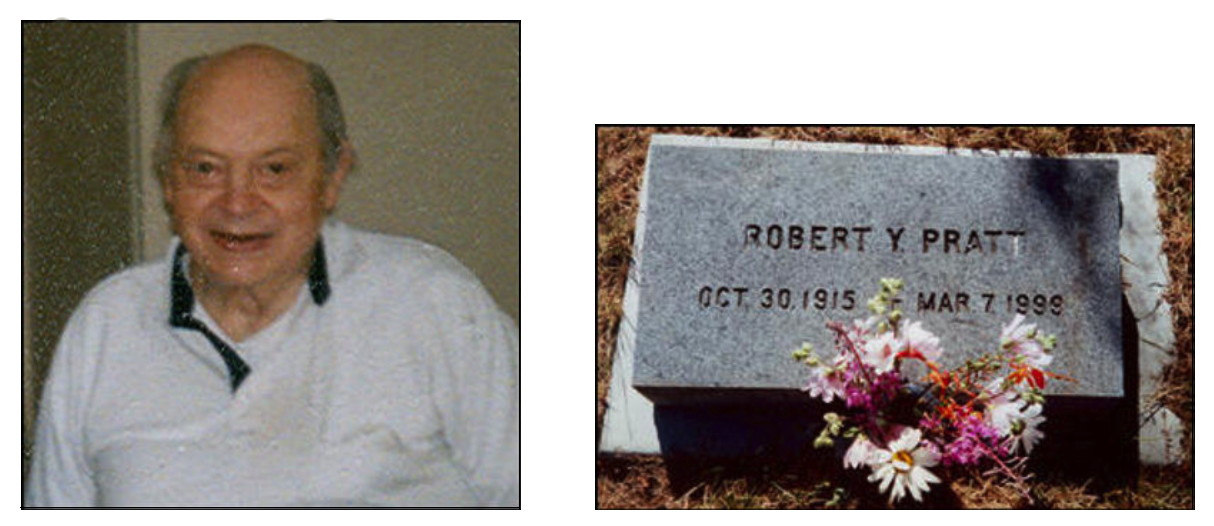The History of Sunnyside Cemetery
1965 - 2005


Samuel Hancock, [1818-1883]
was among the first whites
to settle on Puget Sound,
arriving in 1847. His wife, Susan
Crockett Hancock, crossed
the OregonTrail with her family, arriving on
Whidbey in 1852.
Photo courtesy of Lillian Huffstettler
Sunnyside Cemetery improved markedly in the decades after the creation of Island County Cemetery District No.2. Regulations were established and regular maintenance ensured that the cemetery's appearance matched its incomparable setting on the hillside above Ebey's Prairie.
After the cemetery district's founding, efforts also began to preserve its history. Leading the way was the district's secretary, Jimmie Jean Cook, who saw the cemetery as an integral part of central Whidbey's identity. Prior to the cemetery's clean-up, she diligently tromped through waist-high grass to ensure Sunnyside's oldest monuments were saved, and later wrote about the graveyard in her landmark book, A Particular Friend, Penn's Cove. Others also contributed, including retired Coupeville businessman Carl Dean, who created the first comprehensive map of the cemetery in 1969, which clarified the boundaries of its various plats and how they fit together. And in 1983, Bellingham resident Donna Sand, assisted by her husband, Bob, and others, spent the entire summer painstakingly recording the information on Sunnyside's countless monuments. A small number of the tombstone inscriptions had been documented before, most notably in 1916 by Victor Farrar of the University of Washington, and the Daughters of the American Revolution in 1955 and 1972. But Sand's effort created the first comprehensive list of who was buried at Sunnyside, where and when. And, more importantly, Sand recorded all of the information on the monuments including nineteenth-century inscriptions and memorial verse that have since become illegible. In 1999 the cemetery board, then consisting of Roger Sherman [son of Clark], Val Arnold, and Freeman Boyer, commissioned Theresa Trebon of Continuum History and Research to write an in-depth history of Sunnyside. Prior to that time, the graveyard was thought to have been founded in 1853, the date of death inscribed on its oldest tombstone, that of Rebecca Davis Ebey. Trebon's research into the Ebey family's letters and diaries revealed the cemetery's founding date of 1865, and the vital role that the Ebeys played in shaping the historic burying ground that, as of 2005, has served central Whidbey for 140 years.

Jimmie Jean Cook
Cook, the author of A Particular Friend, Penn's Cove, was instrumental in preserving the cemetery's history,
and in the creation of the Central Whidbey Island National Historical District in 1973.
She died in 1991 and is buried at Sunnyside.
As the twentieth century closed, pivotal figures in Sunnyside's evolution passed on and most were interred in the cemetery they had worked to safeguard - and restore. The cemetery's first official caretaker, Werner Arnold, died in 1980; he has been followed by a long line of dedicated individuals who ensure that Sunnyside's landscape befits its charge The cemetery's long-time sexton, Edwin Sherman, died in 1996 after serving in that role for over forty years. His son, Dale, took his place and today oversees Sunnyside's operations assisted by his son, Matt. Long-time cemetery commissioners such as Clark Sherman, Bob Hancock, and thirty-three year board veteran, Chuck Arnold, stepped down and were replaced by others who have worked to preserve the historic character of Sunnyside, while planning for its future.
That planning includes ensuring ample burial space as the cemetery's older sections are fully utilized. To that end, cemetery commissioners purchased more land for the cemetery: the Sherman Addition in 1999, and the Pratt Addition in 2000. These acquisitions on Sunnyside's western boundary honor two families who played important roles in both the operation of the cemetery [the Shermans], and the preservation of the landscape surrounding it [Robert Pratt]. Robert was the son of Frank and Lena Pratt, who purchased much of the original Jacob Ebey Donation Claim from Almira Enos in 1901. That year, Frank wrote Almira [daughter of Mary Ebey Bozarth], to inquire about the land stating, "I know nothing about ranches or other conditions important to farmers. My interest is chiefly a sentimental one for beautiful and natural conditions." His "interest" ultimately resulted in the preservation of one of Washington State's most scenic viewpoints. Prior to his death in 1939, Frank commemorated the area's pioneer history by erecting two markers that honored the Ebey family's role on central Whidbey. [One stands today on the bluff above Ebey's Landing; the other commemorates Sunnyside Farm and is located just past the entrance to the cemetery.] Following the death of his parents, Robert inherited the hilltop south of Sunnyside Cemetery, as well as portions of the original Isaac Ebey claim [including the Ferry House], and the Edward Jenne farm. Throughout his life, as the pressures of development encroached on the island, Robert steadfastly preserved his land as agricultural open space, a dedication that was honored after his death in 1999 by the Nature Conservancy.

Robert Pratt, 1915-1999
Sunnyside Cemetery
Photos by Theresa Trebon
